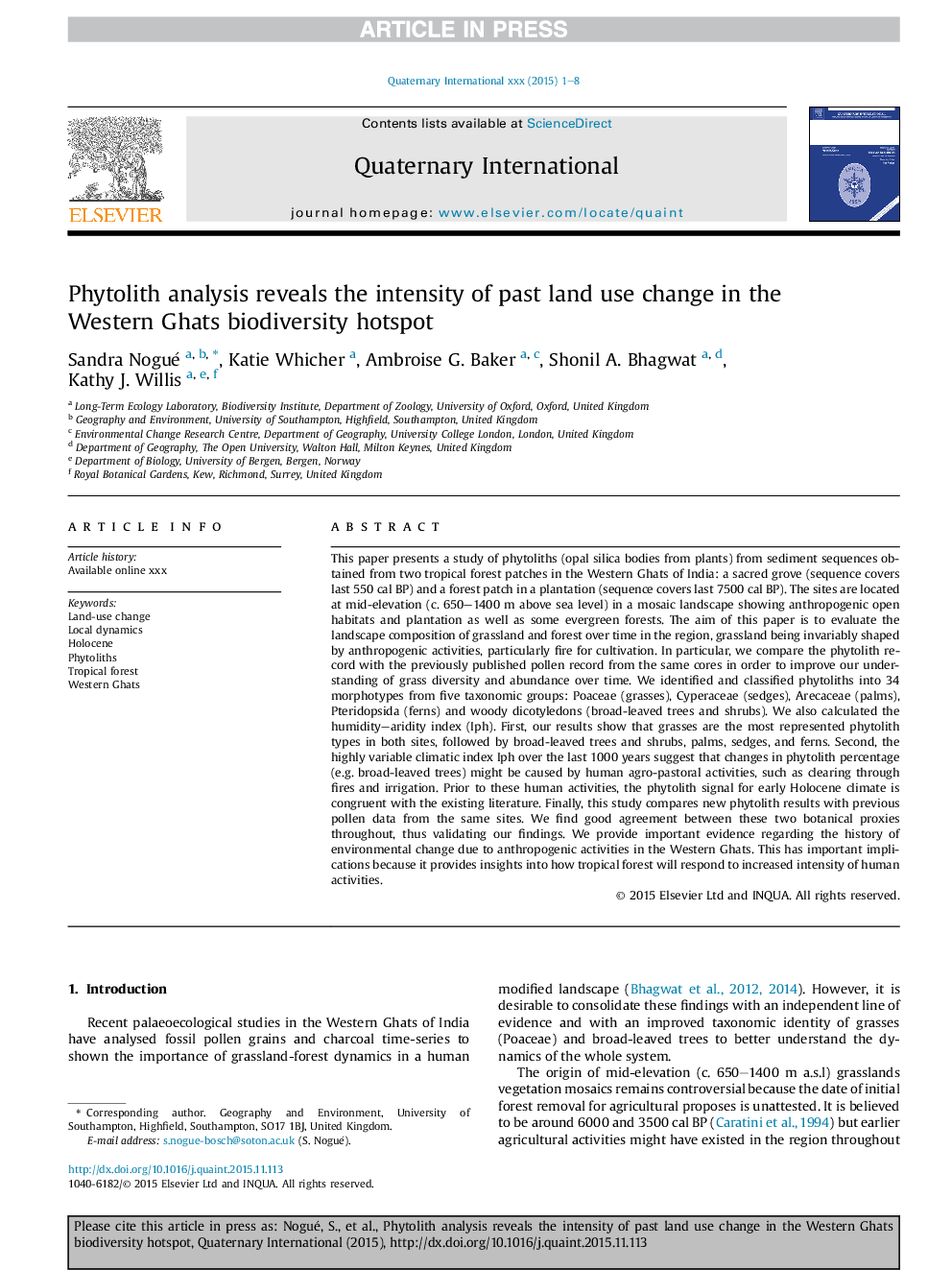| کد مقاله | کد نشریه | سال انتشار | مقاله انگلیسی | نسخه تمام متن |
|---|---|---|---|---|
| 5113474 | 1377934 | 2017 | 8 صفحه PDF | دانلود رایگان |
عنوان انگلیسی مقاله ISI
Phytolith analysis reveals the intensity of past land use change in the Western Ghats biodiversity hotspot
ترجمه فارسی عنوان
تجزیه و تحلیل فیتولیت نشان می دهد که شدت تغییرات استفاده گذشته از زمین در نقاط مختلف غربی
دانلود مقاله + سفارش ترجمه
دانلود مقاله ISI انگلیسی
رایگان برای ایرانیان
کلمات کلیدی
تغییر کاربری زمین، دینامیک محلی، هولوسن، فیتولیت، جنگل استوایی، غربی غربی،
موضوعات مرتبط
مهندسی و علوم پایه
علوم زمین و سیارات
زمین شناسی
چکیده انگلیسی
This paper presents a study of phytoliths (opal silica bodies from plants) from sediment sequences obtained from two tropical forest patches in the Western Ghats of India: a sacred grove (sequence covers last 550Â cal BP) and a forest patch in a plantation (sequence covers last 7500Â cal BP). The sites are located at mid-elevation (c. 650-1400Â m above sea level) in a mosaic landscape showing anthropogenic open habitats and plantations as well as some evergreen forests. The aim of this paper is to evaluate the landscape composition of grassland and forest over time in the region, grassland being invariably shaped by anthropogenic activities, particularly fire for cultivation. We identified and classified phytoliths into 34 morphotypes from five taxonomic groups: Poaceae (grasses), Cyperaceae (sedges), Arecaceae (palms), Pteridopsida (ferns) and woody dicotyledons (broad-leaved trees and shrubs). We also calculated the humidity-aridity index (Iph). First, our results show that grasses are the most represented phytolith types in both sites, followed by broad-leaved trees and shrubs, palms, sedges, and ferns. Second, the highly variable climatic index Iph over the last 1000 years suggest that changes in phytolith percentage (e.g. broad-leaved trees) might be caused by human agro-pastoral activities, such as clearing through fires and irrigation. Prior to these human activities, the phytolith signal for early Holocene climate is congruent with the existing literature. Finally, this study compares new phytolith results with previous pollen data from the same sites. We find good agreement between these two botanical proxies throughout, thus validating our findings. We provide important evidence regarding the history of environmental change due to anthropogenic activities in the Western Ghats. This has important implications because it provides insights into how tropical forest will respond to increased intensity of human activities.
ناشر
Database: Elsevier - ScienceDirect (ساینس دایرکت)
Journal: Quaternary International - Volume 437, Part B, 5 May 2017, Pages 82-89
Journal: Quaternary International - Volume 437, Part B, 5 May 2017, Pages 82-89
نویسندگان
Sandra Nogué, Katie Whicher, Ambroise G. Baker, Shonil A. Bhagwat, Kathy J. Willis,
